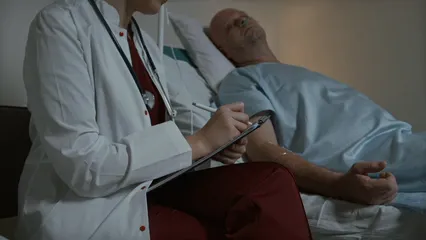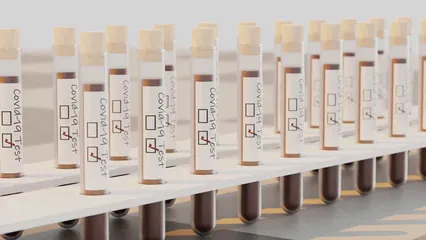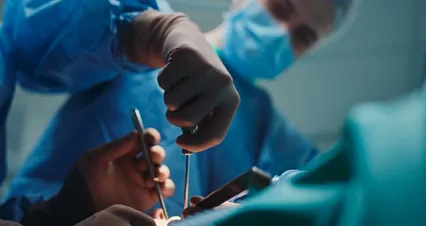
Why Do I Bruise So Easily? Understanding the Causes and Concerns
Introduction
Picture this: You’re at a party, laughing and chatting, when you notice a strange bruise on your arm. “Did I bump into something?” you wonder. Or maybe you discover one while getting dressed, and suddenly you feel like a walking Jackson Pollock painting. It’s a common worry, and you’re not alone. Many people experience unexplained bruises, leading to questions about their health.
Bruising can range from minor annoyances to more serious concerns. Some folks may notice a single bruise after a bump, while others might develop several without any apparent reason. What gives? Understanding why you bruise easily is essential, not just for peace of mind, but to recognize when it might be time to seek medical advice.
In this article, we’ll break down the reasons behind easy bruising, the common culprits, and when to consult a healthcare professional. Spoiler alert: it’s not all about being clumsy!
Understanding Bruising
What is a Bruise?
A bruise, or contusion, is more than just a colorful mark on your skin. It occurs when blood vessels sustain damage, causing blood to leak into the tissue beneath the skin. This leakage results in the characteristic discoloration that ranges from red or purple to yellow and green as the bruise heals.
There are different types of bruises to be aware of:
- Ecchymosis: This is a larger bruise, typically more than 1 centimeter in size.
- Hematoma: A more significant pooling of blood that can feel raised and painful.
- Petechiae: Tiny, pinpoint red or purple spots that often indicate bleeding under the skin.
Understanding these variations can help you identify the type of bruising you’re experiencing. If you see a bruise that doesn’t fit the typical pattern or if it behaves unusually, it might be worth a chat with your doctor.
Visual aids can be beneficial here, so imagine a diagram showing these types of bruises. It could help clarify the differences and make you feel more informed about what you’re dealing with.
As you can see, bruising isn’t just a nuisance; it can reflect various health aspects. So, keep reading to learn why some people seem to collect bruises like they’re trading cards, and what you can do about it!

How Bruises Heal
Bruises are like the party crashers of our skin. They show up uninvited after we bump into something, leaving behind a colorful reminder of our clumsiness. But how do they heal, and what’s with all those funky colors?
When a bruise forms, small blood vessels break, leaking blood into the surrounding tissue. Initially, bruises start as a reddish or purplish mark. As time goes on, they undergo a color transformation. They might turn blue or black, which is a sign that the blood is beginning to break down. After a few days, bruises transition to shades of green and yellow before finally fading away to their original skin tone.
The healing process occurs because your body works diligently to reabsorb the blood that spilled into the surrounding tissue. Typically, bruises can take about one to two weeks to heal completely. However, the healing time can vary based on the bruise’s severity, your individual health, and the location of the bruise.
If you want to speed up that healing process, consider using a R.I.C.E. Method First Aid Kit. It’s like having a mini hospital in your home, ready to tackle those uninvited bruises and sprains!

Common Causes of Easy Bruising
Age and Genetics
As we age, our skin and blood vessels change. The skin thins out, and the fat layer cushioning our blood vessels decreases. This makes bruising easier after minor bumps. Genetics also plays a role; if your family has a history of easy bruising, you might be more prone to it as well. So, if your grandma had a knack for collecting bruises, you might just have inherited that talent.

Medications
Certain medications can turn you into a walking canvas of bruises. Blood thinners like warfarin, heparin, and dabigatran are notorious for reducing your blood’s ability to clot, increasing your chances of bruising. Nonsteroidal anti-inflammatory drugs (NSAIDs) like aspirin and ibuprofen can also contribute. They can interfere with normal blood clotting, making you more susceptible to those pesky marks. If you’ve recently started a new medication and noticed an uptick in bruising, it might be worth chatting with your doctor about it.
To help with pain relief, consider adding Acetaminophen Pain Reliever to your medicine cabinet. It’s a trusty solution for those unexpected aches!

Nutritional Deficiencies
Your diet plays a crucial role in how your body heals and maintains blood vessel integrity. Vitamins C and K are essential for healthy skin and blood clotting. A deficiency in vitamin C can lead to weakened blood vessels, while low vitamin K levels can impact your body’s ability to stop bleeding. Foods rich in these vitamins include leafy greens, citrus fruits, and fatty fish. If your diet lacks these nutrients, you might be setting the stage for easy bruising.
Zinc is another mineral important for overall skin health. Low levels of zinc can lead to various skin issues, including bruising. If you’re not getting enough from your diet, consider adding foods like nuts, seeds, and whole grains to your meals. For an extra boost, check out Zinc Supplements for your daily routine!
In conclusion, bruising easily can often be attributed to aging, medications, and dietary deficiencies. While these factors are common, it’s essential to monitor your bruising patterns. If you notice frequent unexplained bruises, it might be time to consult a healthcare professional for further evaluation. After all, no one wants to be an accidental Picasso!

When to Seek Medical Attention
Signs of Serious Conditions
Noticing a bruise here and there might seem harmless, but there are times when it’s a red flag. If you find yourself frequently sporting unexplained bruises, it’s time to pay attention. Here are some key symptoms that should prompt a visit to your healthcare provider:
- Frequent unexplained bruising: If you’ve become a human canvas for bruises, and you can’t recall bumping into anything, it might be time to investigate further.
- Bruises in unusual locations: Bruises that appear on areas like your torso or face, especially without any history of trauma, can be concerning.
- Large or painful bruises: If a bruise seems unusually large or painful, it warrants a second look.
- Accompanying symptoms: Watch out for other warning signs like prolonged bleeding, frequent nosebleeds, or heavy menstrual periods. These could indicate underlying issues that need addressing.
- Family history: If there’s a history of bleeding disorders in your family, it’s wise to consult a medical professional.
Understanding your full medical history is crucial for pinpointing any underlying issues. Be prepared to discuss recent medications, lifestyle changes, or any other symptoms you’ve noticed. The more information you provide, the better equipped your doctor will be to help you.

Diagnostic Procedures
Once you decide to seek medical attention, your doctor may suggest several diagnostic tests to identify the cause of your easy bruising. These could include:
- Blood tests: A complete blood count (CBC) can help determine your platelet levels and assess your overall blood health. Low platelet counts can lead to increased bruising.
- Clotting factor tests: These tests evaluate how well your blood clots and can help identify any clotting disorders.
- Imaging tests: In certain cases, doctors may recommend imaging studies like X-rays or ultrasounds if they suspect internal bleeding or other injuries.
By conducting these tests, your healthcare provider can get a clearer picture of your health and determine if there’s an underlying condition contributing to your easy bruising. Remember, while it may be tempting to ignore those pesky marks, being proactive about your health can lead to better outcomes in the long run. So, don’t hesitate to reach out to a professional if you’re concerned!

Treatment Options
Home Care for Bruises
Bruises can be a pain—literally! But the good news is that many can be treated at home. The R.I.C.E. method is your best friend when it comes to managing bruises.
- Rest: Take it easy! Limit movement in the affected area to help your body heal.
- Ice: Apply an ice pack wrapped in a towel to the bruise for 20 minutes at a time. This helps reduce swelling and numb the pain. Just remember: no direct ice on the skin!
- Compression: Use a soft bandage to gently wrap the bruised area. This can help limit swelling, but avoid wrapping it too tightly!
- Elevation: Raise the injured area above heart level. This helps minimize swelling and encourages blood flow back to the heart.
For pain relief, over-the-counter medications like acetaminophen can come to the rescue. If you’re a fan of NSAIDs, such as ibuprofen or aspirin, be cautious. These can thin the blood and increase bruising. Always read the labels and consult your doctor if you’re unsure.

Medical Treatment
If you find yourself bruising like a ripe banana, it may be time to consult a healthcare professional. They can help identify any underlying conditions contributing to your easy bruising.
For instance, if your bruising is due to a blood disorder, treatments may include medications to improve platelet function or other therapies tailored to your condition. If you’re on blood thinners, your doctor might suggest alternatives that are less likely to leave you with a rainbow of bruises on your skin.
In addition to medical treatments, lifestyle changes can be beneficial. A diet rich in vitamins C and K can strengthen your blood vessels and improve clotting. Foods like leafy greens, citrus fruits, and nuts are excellent choices. Staying hydrated and maintaining a healthy weight also supports overall skin and vascular health. For a delicious way to incorporate healthy meals, check out this Healthy Cookbook!
If you’re into the active lifestyle, consider using protective gear during sports or activities that put you at risk of bumps and scrapes. Reducing falls at home by clearing clutter or improving lighting can also reduce the chances of unwanted bruises.

FAQs
Is it normal to bruise easily as I age?
Yes, aging can lead to thinner skin and more fragile blood vessels. As we age, our skin loses elasticity and fat, making it easier to bruise. You might feel like a delicate flower, but that’s just nature’s way of reminding us we’re not as invincible as we once thought!
What should I do if I notice a bruise without an injury?
Consult a healthcare provider to rule out underlying conditions. If you find a bruise that seems to have appeared out of nowhere, don’t panic! However, it’s wise to get it checked out to ensure there’s no hidden trouble brewing beneath the surface.
Can diet affect my tendency to bruise?
Yes, deficiencies in certain vitamins and minerals can lead to increased bruising. A lack of vitamin C, for example, can weaken blood vessels, while low vitamin K can affect blood clotting. So, if your diet resembles that of a chip-loving couch potato, it might be time to add some fruits and veggies!
When should I call a doctor about my bruising?
If bruises are frequent, large, or accompanied by other unusual symptoms. If you feel like you’ve turned into a walking mural of bruises, especially in bizarre places or if they come with a side of dizziness or other symptoms, it’s time to reach out to your doctor. Better safe than sorry!
To keep your skin looking fresh and healthy, consider incorporating a Skin Moisturizer for Sensitive Skin into your daily routine!
Please let us know what you think about our content by leaving a comment down below!
Thank you for reading till here 🙂
All images from Pexels




